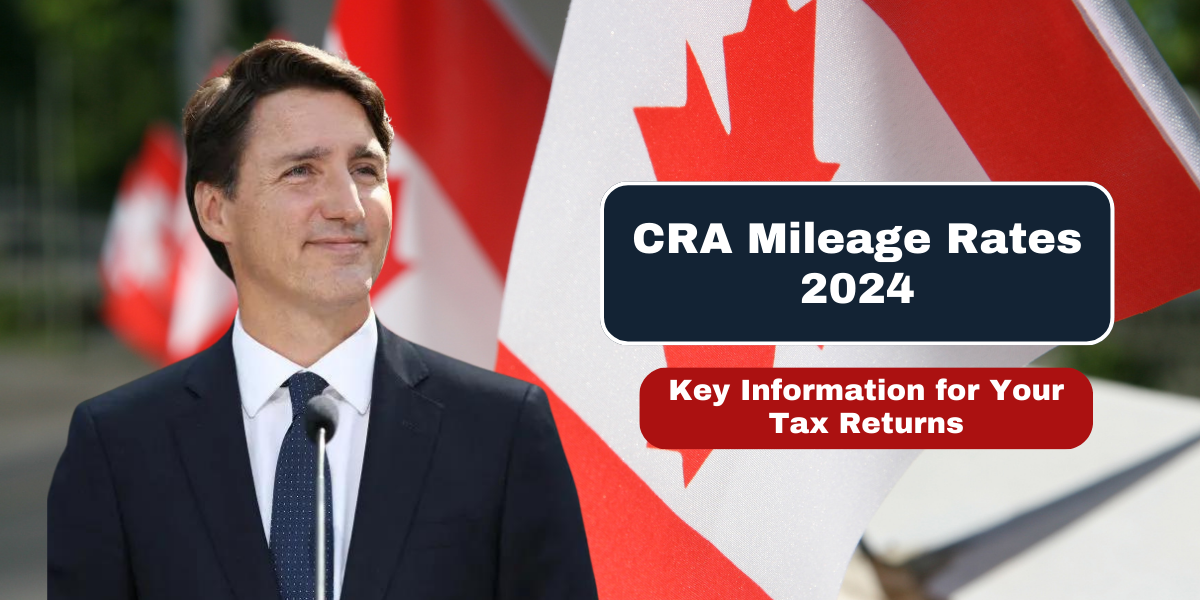Dealing with mileage rates can be complex, particularly when preparing your tax returns. With the CRA (Canada Revenue Agency) adjusting mileage rates for 2024, it’s crucial to understand how these changes affect your tax filing. This guide will provide a comprehensive overview of the new rates, explain how to calculate your deductions accurately, and offer strategies for optimizing your tax benefits.
Understanding these updates ensures you are well-prepared for tax season. Whether you use the standard mileage rates or opt to track actual vehicle expenses, proper recordkeeping is essential. By staying informed and organized, you can efficiently manage your deductions and maximize your potential savings.
CRA Mileage Rates for 2024
Current Rates
For the 2024 tax year, the CRA mileage rates are:
- 70 cents per kilometer for the first 5,000 kilometers driven for business purposes.
- 64 cents per kilometer for each additional kilometer beyond 5,000.
These rates cover all vehicle-related expenses, including fuel, maintenance, insurance, and depreciation.
Important Points to Remember
- Business Use Only: The mileage rate applies exclusively to business-related travel. Personal travel is not covered.
- Recordkeeping: Detailed receipts are not required, but maintaining a log of business-related trips is crucial.
- Alternative Method: Instead of using the mileage rate, you can track actual vehicle expenses, which requires meticulous recordkeeping.
Historical CRA Mileage Rates
Mileage Rates Over the Last Five Years
Here’s a comparison of CRA mileage rates from 2019 to 2024:
| Year | First 5,000 km | Additional km |
|---|---|---|
| 2019 | 58¢ per km | 52¢ per km |
| 2020 | 59¢ per km | 53¢ per km |
| 2021 | 59¢ per km | 53¢ per km |
| 2022 | 61¢ per km | 55¢ per km |
| 2023 | 68¢ per km | 62¢ per km |
| 2024 | 70¢ per km | 64¢ per km |
These rates are designed to account for typical vehicle expenses and are updated annually to reflect changes in costs.
Alternative to Mileage Rates: Tracking Actual Vehicle Expenses
I. Tracking Actual Vehicle Expenses
If you prefer to use the actual expense method, you need to maintain detailed records of your vehicle-related costs. This can be more complex but might yield a larger deduction if your actual expenses exceed the standard mileage rate.
II. Essential Records to Keep
- Fuel Costs: Save receipts for all fuel purchases.
- Vehicle Lease/Financing Payments: Document monthly payments or lease agreements.
- Insurance Premiums: Keep proof of payment for vehicle insurance.
- Repairs and Maintenance: Retain receipts for any repairs and maintenance work.
- Registration and License Fees: Maintain proof of payment.
- Depreciation: Record a portion of the vehicle’s value as a depreciation expense.
III. Depreciation Methods
Depreciation allows you to claim a portion of the vehicle’s cost over its useful life. Two common methods are:
- Straight-Line Method: Spreads the cost evenly over the vehicle’s lifespan.
- Declining Balance Method: Causes a greater amount of depreciation in the initial years.
Example Calculation
For a vehicle purchased at $30,000 with a $5,000 salvage value and a five-year useful life:
- Straight-Line Depreciation: ($30,000 – $5,000) / 5 = $5,000 per year.
- Declining Balance Depreciation: 30% of the declining book value each year.
Recordkeeping for Vehicle Expenses
Why Recordkeeping is Crucial
Maintaining detailed records is essential for claiming vehicle expenses. During a tax audit, the CRA may request this information.
What to Record
- Trip Logs: Include date, starting and ending odometer readings, destination, and business purpose for each trip.
- Receipts: Keep all receipts related to vehicle expenses.
- Vehicle Logbook: Use a logbook to organize your records.
- Digital Recordkeeping: Consider using apps or software to streamline the process and ensure backups.
Expense Allocation Between Personal and Business Use
How to Allocate Expenses
When using the actual expense method, you must allocate costs between personal and business use. Common methods include:
- Logbook Method: Calculate based on the percentage of business kilometers driven compared to total kilometers.
- Split Ownership: Divide expenses based on ownership shares if the vehicle is jointly owned.
Example of Expense Allocation
If you use your vehicle 70% for business and 30% for personal use, and your total expenses amount to $10,000:
- Business Expenses: $10,000 * 70% = $7,000
- Personal Expenses: $10,000 * 30% = $3,000
You can only claim the $7,000 of business-related expenses as a tax deduction.
CRA Mileage Rate for Medical Travel
Medical Travel Expenses for 2023
For medical travel in 2023, the mileage rate is: 64 cents per kilometer
Other Eligible Medical Travel Expenses
- Transportation Costs: Claim costs for public transportation, taxi fares, or mileage for personal vehicles.
- Accommodation: Claim reasonable accommodation costs if overnight stay is required.
- Meals: Claim $23 per meal, up to a maximum of $69 per day.
Tracking Medical Travel Expenses
You can either use the actual cost method or the mileage rate method to claim medical travel expenses. Ensure you meet the 40-kilometer minimum travel distance requirement to qualify.
Conclusion
Understanding the CRA mileage rates for 2024 is crucial for optimizing your tax savings. The updated rates—70 cents per kilometer for the first 5,000 kilometers and 64 cents for each additional kilometer—provide a streamlined way to calculate business-related vehicle expenses. Whether you opt for these standard rates or choose to track actual vehicle expenses, meticulous recordkeeping is essential.
Accurate documentation not only ensures compliance with CRA regulations but also maximizes your potential tax benefits. By staying well-informed and organized, you can navigate the complexities of mileage deductions effectively. This proactive approach helps in claiming the appropriate deductions and avoiding any pitfalls during tax filing.
FAQs
What is the CRA mileage rate for 2024?
For 2024, the CRA mileage rate is 70 cents per kilometer for the first 5,000 kilometers driven for business and 64 cents per kilometer for additional kilometers.
Can I use the actual expense method instead of the mileage rate?
Yes, you can use the actual expense method. This requires detailed recordkeeping of all vehicle-related costs and can be more time-consuming.
How do I calculate depreciation for my vehicle?
Depreciation can be calculated using the straight-line method or the declining balance method. The choice depends on your specific situation and the type of vehicle.






